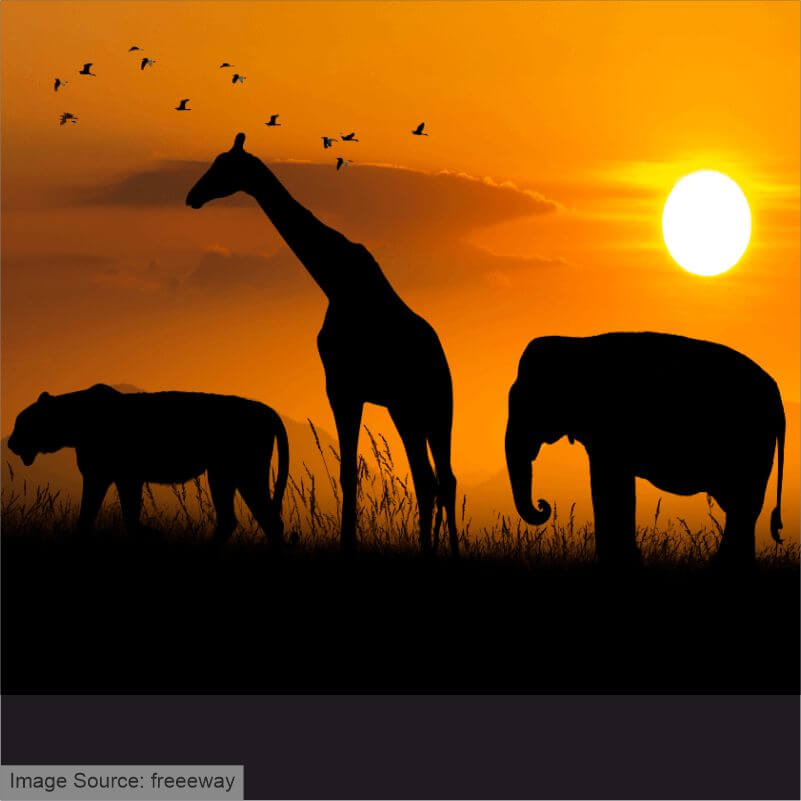World Animal Day is an international day of action for animal rights and welfare celebrated annually on October 4. Wildlife conservation plays a pivotal role in maintaining biodiversity, which is essential for the health and stability of ecosystems. Biodiversity, the variety of life on Earth, ensures that ecosystems function properly, providing humans with critical services such as clean air, water, and fertile soil. However, the increasing rate of habitat destruction, climate change, poaching, and pollution is threatening the survival of numerous species, making wildlife conservation more crucial than ever.
The Importance of BiodiversityBiodiversity acts as the foundation for healthy ecosystems. No matter how small, every species contributes to the balance of the environment. This intricate web of life allows ecosystems to thrive, supporting essential processes such as pollination, nutrient cycling, and soil formation. For example, bees and other pollinators are necessary for the reproduction of many plants, including those that produce food crops. Without them, global food security would be at risk.
When a species becomes endangered or extinct, it can trigger a cascade of negative effects within an ecosystem. For example, the loss of a predator can lead to overpopulation of certain species, which may cause imbalances in plant life and affect other wildlife. These disruptions can weaken ecosystems, making them less resilient to environmental changes such as droughts or floods. By protecting wildlife, we help preserve the complex relationships that sustain life on Earth.
Threats to WildlifeSeveral factors are driving the rapid decline in wildlife populations. Habitat loss, primarily due to deforestation and urbanisation, is one of the leading causes of species endangerment. As humans expand into natural habitats, animals lose the space they need to live, hunt, and reproduce. The fragmentation of habitats also isolates animal populations, reducing genetic diversity and making them more vulnerable to disease.
Climate change is another significant threat. Rising temperatures, changing rainfall patterns, and more frequent extreme weather events are altering ecosystems faster than many species can adapt. For instance, polar bears are struggling as the Arctic ice melts, depriving them of the sea ice they need to hunt seals. Similarly, coral reefs, home to thousands of marine species, are dying due to ocean warming and acidification.
Poaching and illegal wildlife trade are also having a devastating impact on species such as elephants, rhinos, and tigers. These animals are often hunted for their horns, tusks, and skins, driving some species to the brink of extinction. Pollution, including plastic waste and chemical runoff, further harms wildlife, particularly in oceans where marine animals ingest or become entangled in debris.

The Role of Wildlife Conservation
Wildlife conservation efforts are essential to counteract these threats and protect biodiversity. Conservationists work to safeguard habitats, restore degraded ecosystems, and establish protected areas where species can thrive without human interference. Reforestation projects, for example, help to rebuild habitats, while marine reserves protect endangered species from overfishing.
Species-specific conservation programmes are also vital. These initiatives focus on breeding endangered species in captivity and reintroducing them into the wild, as well as cracking down on poaching through anti-poaching patrols and stricter laws. Public education and awareness campaigns are key to encouraging communities to participate in conservation efforts, whether by supporting sustainable practices, reducing waste, or volunteering with conservation organisations.
How You Can HelpIndividuals can contribute to wildlife conservation in several ways. Supporting eco-friendly products and reducing single-use plastics helps protect marine life from pollution. Additionally, promoting sustainable travel and avoiding products made from endangered animals can lessen the demand for illegal wildlife trade. Donating to or volunteering with wildlife conservation organisations also directly aids efforts to protect species and habitats.
ConclusionBiodiversity is essential for the survival of life on Earth, and wildlife conservation plays a critical role in maintaining it. Without urgent action, many species will continue to decline, threatening the balance of ecosystems and the health of the planet. By protecting wildlife and their habitats, we ensure that future generations inherit a world rich in biodiversity, where ecosystems can thrive and continue to support all forms of life. We at Child Help Foundation have helped and fed more than 60 thousand animals to date under the Life on Land and Life Below Water SDG.
